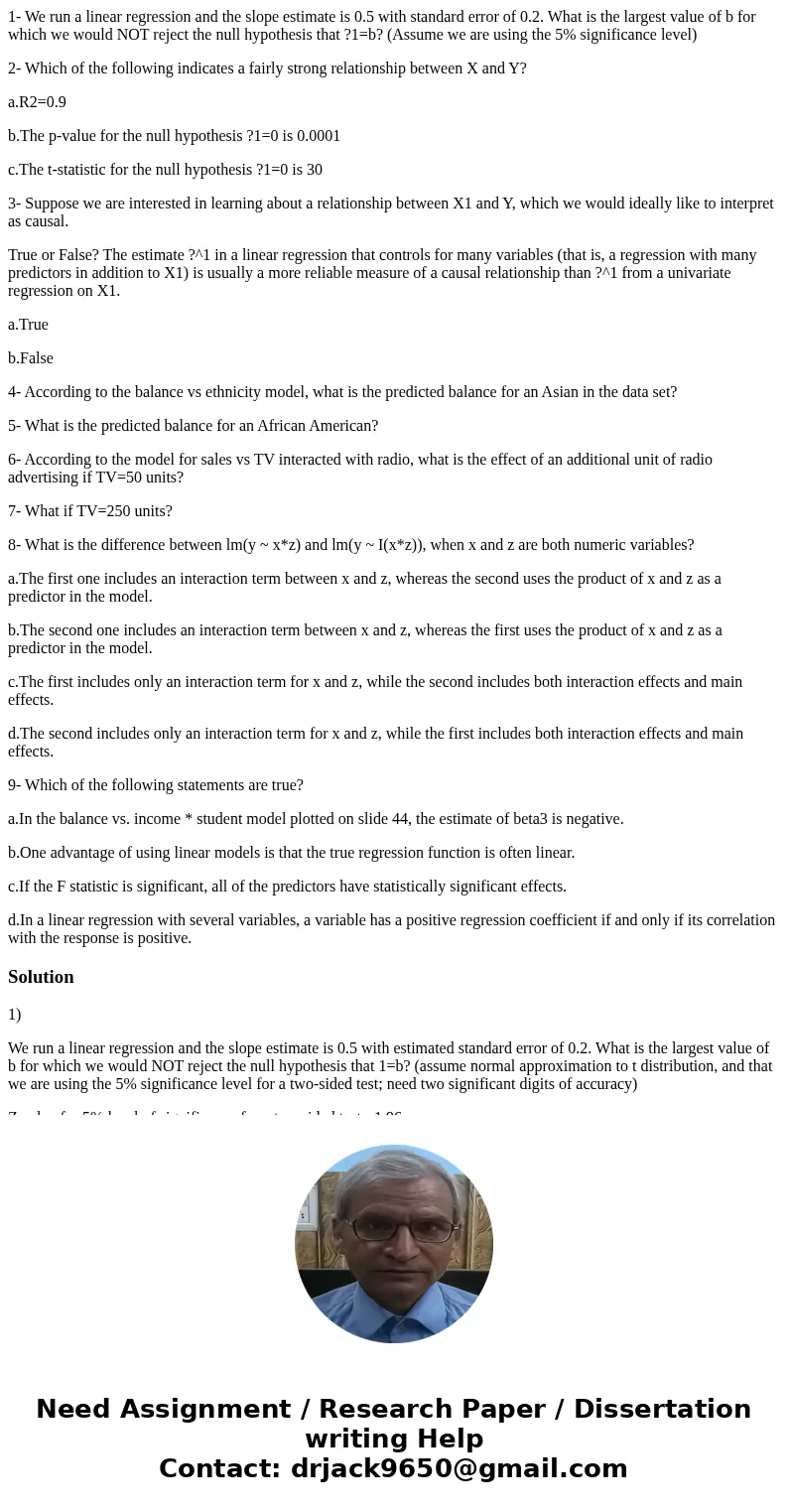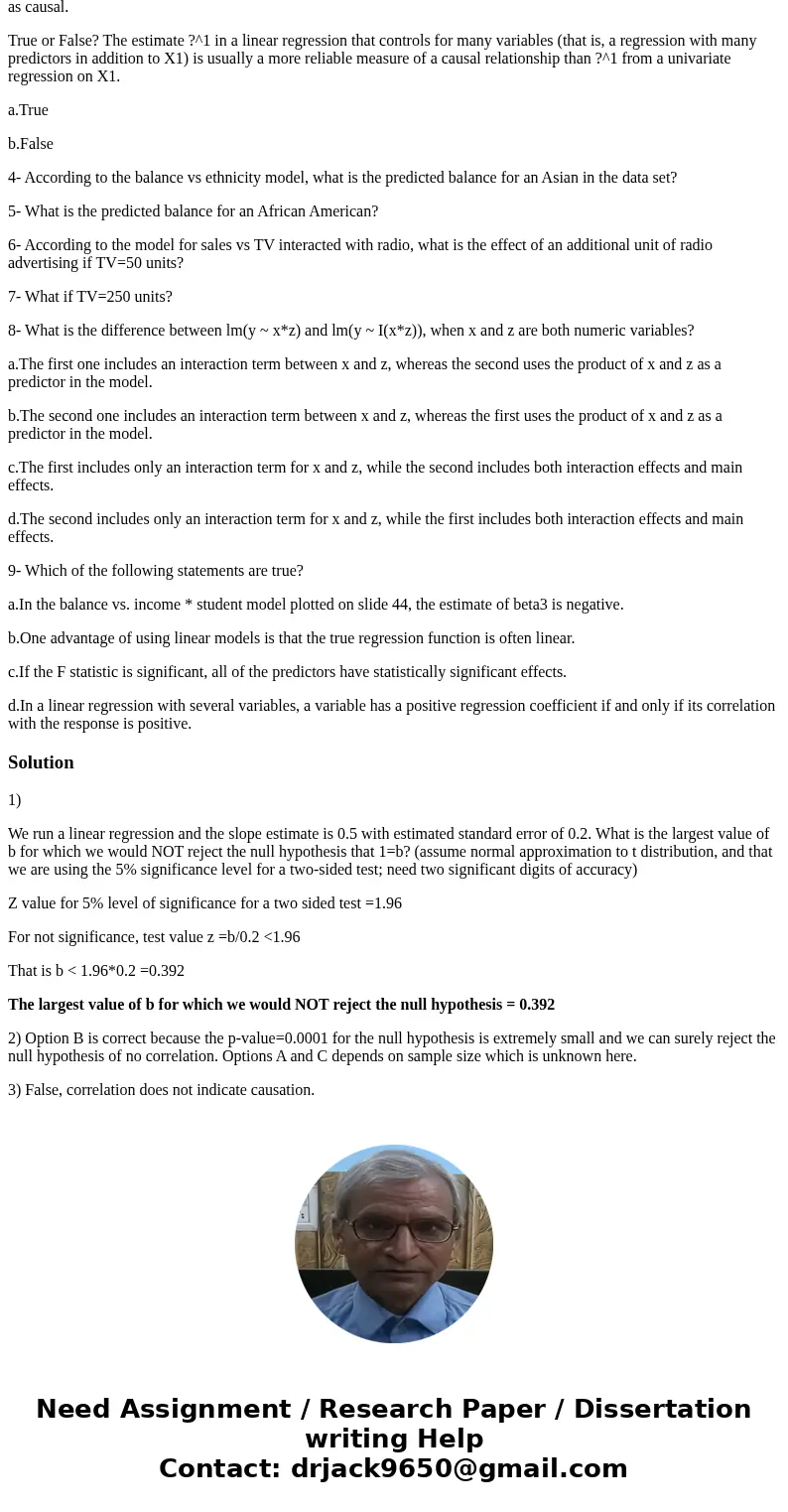1 We run a linear regression and the slope estimate is 05 wi
1- We run a linear regression and the slope estimate is 0.5 with standard error of 0.2. What is the largest value of b for which we would NOT reject the null hypothesis that ?1=b? (Assume we are using the 5% significance level)
2- Which of the following indicates a fairly strong relationship between X and Y?
a.R2=0.9
b.The p-value for the null hypothesis ?1=0 is 0.0001
c.The t-statistic for the null hypothesis ?1=0 is 30
3- Suppose we are interested in learning about a relationship between X1 and Y, which we would ideally like to interpret as causal.
True or False? The estimate ?^1 in a linear regression that controls for many variables (that is, a regression with many predictors in addition to X1) is usually a more reliable measure of a causal relationship than ?^1 from a univariate regression on X1.
a.True
b.False
4- According to the balance vs ethnicity model, what is the predicted balance for an Asian in the data set?
5- What is the predicted balance for an African American?
6- According to the model for sales vs TV interacted with radio, what is the effect of an additional unit of radio advertising if TV=50 units?
7- What if TV=250 units?
8- What is the difference between lm(y ~ x*z) and lm(y ~ I(x*z)), when x and z are both numeric variables?
a.The first one includes an interaction term between x and z, whereas the second uses the product of x and z as a predictor in the model.
b.The second one includes an interaction term between x and z, whereas the first uses the product of x and z as a predictor in the model.
c.The first includes only an interaction term for x and z, while the second includes both interaction effects and main effects.
d.The second includes only an interaction term for x and z, while the first includes both interaction effects and main effects.
9- Which of the following statements are true?
a.In the balance vs. income * student model plotted on slide 44, the estimate of beta3 is negative.
b.One advantage of using linear models is that the true regression function is often linear.
c.If the F statistic is significant, all of the predictors have statistically significant effects.
d.In a linear regression with several variables, a variable has a positive regression coefficient if and only if its correlation with the response is positive.
Solution
1)
We run a linear regression and the slope estimate is 0.5 with estimated standard error of 0.2. What is the largest value of b for which we would NOT reject the null hypothesis that 1=b? (assume normal approximation to t distribution, and that we are using the 5% significance level for a two-sided test; need two significant digits of accuracy)
Z value for 5% level of significance for a two sided test =1.96
For not significance, test value z =b/0.2 <1.96
That is b < 1.96*0.2 =0.392
The largest value of b for which we would NOT reject the null hypothesis = 0.392
2) Option B is correct because the p-value=0.0001 for the null hypothesis is extremely small and we can surely reject the null hypothesis of no correlation. Options A and C depends on sample size which is unknown here.
3) False, correlation does not indicate causation.


 Homework Sourse
Homework Sourse